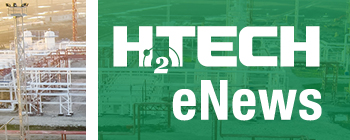News
Storengy Deutschland receives up to €4.5 MM in EU funding for SaltHy H2 storage project
Storengy Deutschland has signed a grant agreement with the European Commission, securing up to €4.5 MM in funding from the EU Connecting Europe Facility (CEF) fund for the SaltHy hydrogen (H2) storage project.
The company is planning to build an underground H2 storage facility near its existing natural gas storage facility in Harsefeld, Stade region (Lower Saxony). The H2 storage facility is scheduled to go into operation in 2032.

The project is of particular importance for the EU's energy infrastructure: thanks to its location at the crossroads of import routes from Denmark and the Netherlands, the H2 storage facility in Harsefeld will have a cross-border impact and contribute to an integrated European H2 market.
The CEF is a funding instrument that aims to promote growth, jobs and competitiveness in Europe through targeted investment in cross-border infrastructure. It supports the development of projects in the areas of transport, energy and digital services. The funding is aimed at so-called Projects of Common Interest (PCI), a status that SaltHy has also received. These projects are of particular importance for the EU's energy infrastructure. In the call for funding for PCI projects in the energy sector in 2024, Storengy applied for funding for studies, i.e. preparatory measures for project implementation.
The funding will be used for predefined work packages in the areas of engineering (underground, above ground and brine plant), approval procedures and stakeholder management as well as risk, HSE and quality management. The project volume for the studies in these areas amounts to a total of around €9 MM, 50% of which can now be covered by the funding.
“Thanks to the funding from the Connecting Europe Facility, we can take the next step in the implementation of our SaltHy project. Our hydrogen storage facility in Harsefeld will have an impact beyond Germany's borders thanks to its location at the crossroads of import routes from Denmark and the Netherlands. This is why the EU is funding the study phase of our project. Such funding is essential for the ramp-up of a European hydrogen economy,” says Matthieu Keime, Head of Hydrogen Storage at Storengy Deutschland.
H2 will play a crucial role in the energy mix of the future, particularly in the decarbonization of industry and the achievement of European and German climate targets. H2 storage is essential for a successful H2 market ramp-up. Without storage solutions, it will not be possible to balance the volatile production of green H2 in particular with consumption and secure the energy supply.
Storengy Deutschland is planning to build an underground H2 storage facility in salt caverns near its existing natural gas storage facility in Harsefeld in the Stade region of Lower Saxony. Two caverns with a working gas volume of around 7,000 tons each are to be built with the aim of storing 100% H2. Commissioning of the H2 storage facility with the first cavern is planned for 2032, with the second cavern expected to be commissioned in 2034. The existing natural gas storage facility will then be converted to H2 storage.
Strategic importance of SaltHy in the H2 economy. SaltHy is ideally located to play a central role in the European and German H2 economy. Northern Germany, in particular Lower Saxony, is at the center of the future H2 core network, its first sections in the Stade region are scheduled to go into operation as early as 2028. The geographical location with its adjacent port, H2 delivery by ship and ammonia rectification makes this region an important strategic hub for trade, logistics and industrial development relating to H2.

